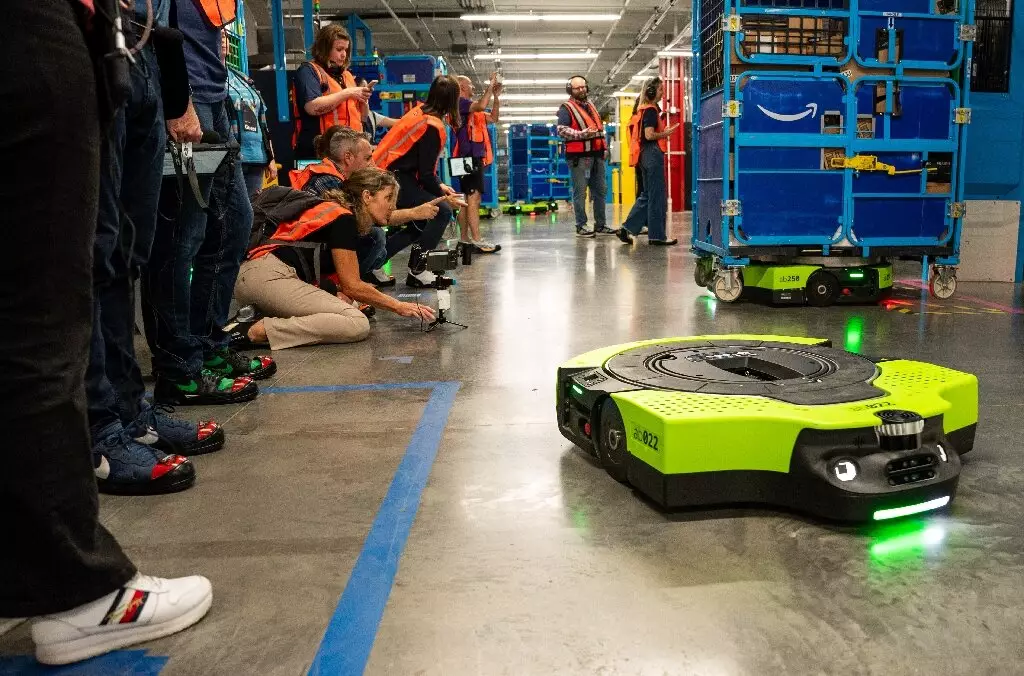Amazon, the e-commerce behemoth based in Seattle, is relentlessly enhancing its influence in everyday lives through a combination of technological advancements and strategic innovations. A recent array of developments—from sophisticated logistics to health care services—illustrates how Amazon strives to maintain its dominance. A significant innovation includes a newly designed computer system for delivery vans, aimed at optimizing the efficiency of its logistics network. According to Doug Herrington, head of Amazon Stores, this system equips delivery vehicles with capabilities to recognize delivery stops and select the corresponding packages for drop-off. This attention to delivery speed is rooted in Amazon’s understanding that more efficient deliveries can enhance customer engagement, with Herrington noting a direct correlation—”When we speed up deliveries, customers shop more.”
In pursuit of unrivaled customer service, Amazon is gearing up for 2024, heralding the implementation of the fastest Prime delivery speeds globally. This initiative is part of a larger operational strategy that successfully reduced shipping costs last year, indicating Amazon’s ability to adapt while also maximizing profitability. With a staggering profit margin exceeding $30 billion against a revenue backdrop of $575 billion, the tech giant’s diverse segments—ranging from retail to cloud computing—contribute to sustaining this financial prowess.
At the heart of Amazon’s operations lies a flywheel model that integrates its numerous offerings, with Amazon Prime as the pivotal element that binds these components together. Analyst Suzy Davidkhanian highlights the multifarious nature of Amazon’s business, which spans retail, advertising, and entertainment, showcasing its capability to innovate across multiple sectors. However, such a widespread influence also attracts scrutiny. Currently facing a US government lawsuit over allegations of maintaining an illegal monopoly, Amazon has been criticized for stifling competition, showcasing the intricate balance between innovation and market dominance.
Data is another core asset driving Amazon’s business model. By leveraging consumer data analytics, Amazon tailors marketing efforts—enhancing its advertising capabilities, notably through exclusive streaming deals like those of NFL games on Prime Video. This strategic content acquisition not only appeals to sports fans but also contributes valuable insights into user preferences, further solidifying Amazon’s foothold in a competitive marketplace.
Beyond just retail, Amazon is ambitiously venturing into health care, evidenced by its introduction of enhanced services through One Medical. For an affordable monthly fee, Prime members gain access to immediate virtual consultations, a promising move in an industry ripe for disruption. By combining health services with its efficient delivery model, Amazon aims to dominate the pharmacy market, providing speedy prescription deliveries directly to customers’ doors. As Hannah McClellan, chief of Amazon Pharmacy, notes, the initiative emphasizes building a “pharmacy in your pocket,” marrying convenience with accessibility.
This healthcare initiative showcases Amazon’s strategy to become a comprehensive provider of various services, blurring the lines of traditional commerce and healthcare paradigms. However, the pursuit of growth in this sector raises questions about consumer privacy, ethical practices, and the implications of data handling in sensitive health-related matters.
Despite its successes, Amazon faces significant hurdles, particularly regarding its physical store strategy. It has encountered obstacles when attempting to establish a robust presence in brick-and-mortar retail, a space where traditional competitors still hold considerable influence. Next year, the company plans to launch its first automated micro-warehouse adjacent to a Whole Foods Market, a move expected to enhance the shopping experience by bridging online and offline consumer behavior. However, Amazon’s quest for a seamless omnichannel experience will require overcoming several logistical and operational challenges associated with maintaining efficiency and speed at brick-and-mortar locations.
In an effort to innovate its online selling platform, Amazon is increasingly leaning on artificial intelligence to revolutionize the shopping experience. AI-driven tools are being developed to assist sellers in effectively marketing products, customizing labels and descriptions based on user preferences. This technology serves a dual purpose: it simplifies the consumer’s path from research to purchase while enhancing the efficiency of the platform.
Yet, this push toward innovation is not without its criticisms. Concerns have been raised regarding workplace safety within Amazon’s highly automated logistics centers. Critics argue that the pressure for speed can result in heightened risks for employees, complicating the narrative of progress with calls for better working conditions.
Amazon’s trajectory undoubtedly emphasizes the power of innovation in reshaping industries. However, the challenges it faces—from regulatory scrutiny to ethical responsibilities—demonstrate the complexity inherent in its expansive growth strategy. As Amazon propels forward, it will need to navigate the delicate balance between pioneering advancements and addressing the consequences of its dominance in the marketplace. The future landscape will depend not only on its ability to innovate but also on its commitment to fostering a sustainable and responsible approach to business.


Leave a Reply